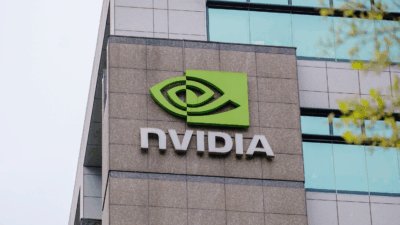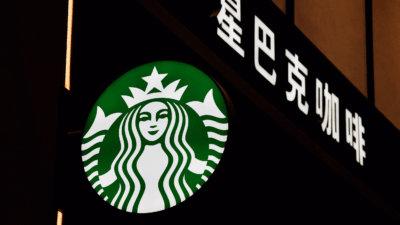Apple’s Fraught Future in China
Apple’s enjoyed unusual levels of success in China for a Western company, but its future in the country is looking less and less bright.

Sign up for smart news, insights, and analysis on the biggest financial stories of the day.
China can be a tough nut to crack for Western businesses, even ones that initially appeared to be too big to fail. For every success story like Nike or McDonald’s, there are plenty of misfires: Home Depot, Best Buy, Uber. Apple, fortunately, has been among the few breakout stars since entering the Chinese market in a big way in the late 2000s with the release of the iPhone 3G.
Apple first started breaking out Greater China (mainland China, Hong Kong, and Taiwan) as a reportable financial segment in 2013, and two years later, the region eclipsed $59 billion in sales. That level dipped over the next five years, but Apple regained its footing in 2021.
Last year, the company reported $72.5 billion in Chinese sales, an enviable total, but in a troubling sign sales decreased every quarter of the year and were significantly down (by 13%) in the last quarter of the year.
Go On, Take a Bite
Apple’s initial triumph in China was emblematic of its ability to captivate consumers anywhere. Sure, the technology was solid, but a lot of its success came from the brand’s image — it shouted premium and luxury. iPhones and Macs look like products for the cool and rich, and if you have one, you must be cool and rich:
- Ever since the launch of the first iPod in the early 2000s, Apple has cultivated a sleek and minimalist style for its products that resonated in China. Even its packaging is so thick, sturdy, and elegant, people have a tough time throwing the boxes away.
- “Over the past 20 years, we can see that among Chinese consumers, status symbols are still very important,” Will Wong, a senior research manager at the International Data Corporation, told The Daily Upside.
Can You Hear Me Now? But Apple didn’t just rely on its coolness as it approached the Chinese market. In 2013, the company signed a deal with China Mobile, the world’s largest telecommunications provider, which at the time serviced 763 million customers. Apple was able to get more iPhones into the hands of Chinese people, ramping up its competition with phones using Google’s Android operating system.
“Getting involved with the different carriers was Apple’s initial breakthrough for securing market share in China,” Martin Yang, senior analyst at Oppenheimer & Co., told The Daily Upside.

Waning Excitement
However, even for Apple diehards, the House that Steve Jobs Built can occasionally be infuriating. Part of Apple’s marketing is instilling into consumers that they absolutely must have the latest iPhone model, despite each iteration being less different than the previous one — other than a higher price tag. And Chinese consumers, who are largely tightening their belts amid their country’s economic slump, are wising up to that.
“Chinese consumers have less FOMO (fear of missing out) sentiment today, and that’s because of the economic slowdown in the country right now,” Wong said. “Consumers are more rational, looking for more value in what they can afford. That doesn’t mean they’re going for cheap, low-end products; it’s just that they’re better at comparing products and their costs. They’re looking for significant upgrades and ‘wow’ factors.”
Those wow factors lie mostly in design and tech features:
- While the iPhone effectively destroyed the flip phone market, it’s suddenly becoming white-hot again. IDC reported that mainland shipments of foldable smartphones reached more than 7 million units last year, up 114% from 2022.
- Apple is rumored to be working on its own foldable iPhone for 2026, which may develop greater enthusiasm for Apple’s product.
Yang echoed that price and design are the two biggest challenges for Apple going forward. “The iPhone got too expensive, and when you look at the biggest appeal for the hardware, it’s usually the display and camera. Those two aspects get incrementally less upgraded over the years.” he said. “The iPhone X’s (released in 2017) display had a major upgrade from an LCD screen to an OLED one, but then you get incrementally less benefits each year when a new model comes out.”
Rivals — In Business and Politics
Apple’s attempt to re-engage consumers also comes as local companies are trying to get the upper hand, especially Huawei. The telecom giant, whose products the US and others suspect are being used for spying by the Chinese government, became persona non grata in many parts of the Western world in the past decade. In 2019, former President Donald Trump signed an executive order that effectively banned Huawei from US communications networks, and multiple European countries took similar measures.
Huawei looked to be on the ropes, especially after the US passed sanctions on China that would keep its government and state-owned companies from accessing certain advanced semiconductor technologies. The fear was that Huawei’s devices could be used to expand China’s military and surveillance capabilities. Huawei’s saving grace — and perhaps ultimately its secret weapon — was that sales in China remained solid enough, before having quite a comeback in 2023.
- Last year, Huawei’s sales surged to nearly $100 billion, jumping 9% from 2022. In 2023’s fourth quarter, Huawei held the fourth-largest share of China’s smartphone market, IDC reported. It had been two years since it was among the top five brands.
- Huawei’s big move came in August, when it released the Mate 60 Pro smartphone, which contains a rather impressive chip that was made in China. Retailing at $1,200, it sold 1.6 million of the devices in its first six weeks.
The Mate 60 Pro, with its 7-nanometer chips — the smaller, the better — highlighted that despite sanctions, China isn’t too far behind the US in chipmaking. US Commerce Secretary Gina Raimondo called the development “incredibly disturbing.”
No iPhones at Work: Only a few days after Huawei’s surprise drop, Beijing banned government employees from using Apple products to reduce the country’s reliance on Western technology. While it came as somewhat of a shock, the ban itself likely won’t have a major effect on Apple’s business. For a long time, Chinese government workers were already using domestic products, Wong said, now it’s just been codified.
The move was similar to how US federal and state employees are increasingly banned from accessing the video-sharing app TikTok on government devices due to national security concerns. But teens aren’t leaving TikTok anytime soon, so it’s unlikely to dent parent company ByteDance’s bottom line.
“The government isn’t reaching so far as to control the kinds of consumer products people are using,” Yang said. “There could be bans in government agencies and certain departments, but overall, it won’t have an effect on iPhone sales in China.”
How Do You Like ‘Dem Apples?
For all its setbacks, Apple actually took the top spot in China’s smartphone market last year for the first time ever, accounting for 17.3% of sales. But it didn’t come without concessions: The demand for its products was partly driven by discounts and promotions, a rarely used tactic for Apple.
This year, however, doesn’t look particularly promising. iPhone sales in China were down more than 30% year-over-year for the first week of the year. Both Piper Sandler and Barclays downgraded their ratings for Apple toward the start of the year, citing strained consumer spending in China and competition with Huawei. The novel yet niche Vision Pro, which is being sold on China’s gray market for double its retail price of $3,500, likely won’t aid Apple’s efforts to regain its footing in the Middle Kingdom, either.
While Apple still has plenty of “stickiness” with customers, Wong doesn’t expect its shipments growth in China to return to positive territory in 2024.
And yet, Apple doesn’t seem too fazed, at least publicly that is. On a recent investors call, Apple CEO Tim Cook, said, “We’ve been in China for 30 years, and I remain very optimistic about China over the long term.”
Things may not have gone rotten just yet. But they do seem to be souring just a little.











